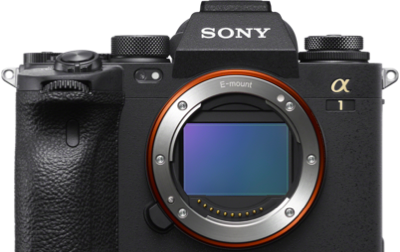This special episode of Reframed With Drew Geraci is all about the power of editing when telling a story through photo or video. “Editing is one of the most powerful things we can do as filmmakers and photographers to help tell a more concise and poignant story,” Geraci says. “Whether you’re using still images or motion video, editing is everywhere around us, even on platforms as simple as Instagram and TikTok. The idea of combining two different clips of video together, is in fact an edit.” Watch below as the Sony Artisan heads to Hollywood to sit down with one of the top film editors in the industry, Jeff Ford, where he shares his knowledge of what it takes to make a great story through the use of editing.
The Sony Artisan heads to Hollywood to sit down with one of the top film editors in the industry, Jeff Ford, to discuss what it takes to make a great story through the use of editing.
Ford is mostly known for his work with Marvel Studios, having done 11 films with them including all of the Avengers movies. As an experienced film editor, he has developed an eye and an ear for choosing and arranging the pieces of footage that should make their way to the final film. “You are looking for the good things, and you’re trying to eliminate the bad things,” Ford explains. “And by good and bad I mean, what parts of the footage are telling the story? That’s good. What parts aren’t helping to tell the story? Those are bad. So you’re trying to find the pieces that you captured that tell the story. And I think that you have to have a good ear and good eye to recognize those things because they’re not always clear when you’re watching dailies. So the editor’s job is to find the pieces and get them in the correct order to tell the story.”
Ford compares editing to putting together a puzzle and creating music. He views it as cinematic expression because you’re taking something that doesn’t really exist in any other form. “Theater is theater, painting is the visual arts, music is music. Now combine all of those things together and now you have something that’s really combining all the great art forms and by doing that you can make juxtapositions that create meaning.”
He continues, “So playing a particular piece of music against a scene will create a certain tone. Eliminating the music for a scene and only focusing on the visuals will create a certain tone for the audience. There are a lot of techniques that we have that allow us to create tone and feeling and emotion for the audience, but like music there’s new ways to combine them. So there’s an infinite number of ways to use those techniques.”
When you think about all of the different techniques – color, music, acting, sound design, pace, rhythm – all of those create tone and drama. Ford says if you’re just getting started and putting together a project, you should have an outline sketched out with a rough idea. There are many different routes you could take and techniques you could use, that you could work on it forever. Ford recommends you have a plan with a beginning, middle and end structure to work toward as you’re making your piece. Having this rough idea will help benefit you and help you plan it out in a rhythmic way.
“I also feel it’s important to understand what you need out of a given shot,” Ford explains. “It’s not so much about matching action or making something feel like it’s a continuous idea. It’s about the rhythm and the flow of it feeling continuous.”
One of the biggest things Ford says to pay attention to when editing is your audio. Your audience is much more likely to notice a disparity in audio than one in picture. “If you’re just starting out, one of the things I encourage people to do is lay your audio track out – almost before you do the picture. Get an audio base down for the first 30 seconds of your piece. Whether it’s a piece of music or dialogue or whatever story you want to tell with audio, and then add pictures to that.”
Another important part of film editing according to Ford is to realize that even if you have a hard opinion about something, you need to honor the screenplay, the actors and the director first. You can bring your opinion in later but don’t bring it to the director in the middle of their process and vision because they won’t get it. You are there to serve the director and it’s really important to have other eyes on it so you’re not getting rid of something that was part of their larger plan. It helps to work together with other people to bring the entire story together.
“If there’s something you love doing, do it, and just keep doing it,” he says. “The more you do it, the more you’ll meet people who like you who do it. The more you’ll create a group of people that you can depend on and collaborate with and slowly everybody will help each other into the business.”
Previous Episodes
Episode 1 - How To Create A Cinematic Timelapse
Episode 2 - Motion Control In Video & Timelapse
Episode 3 - Wildlife Photography
Episode 4: Part 1 – Cinematic Lighting For Portraits
Episode 4: Part 2 – Making Your Video Portraits Pop
Subscribe to the Alpha Universe YouTube Channel for more.

